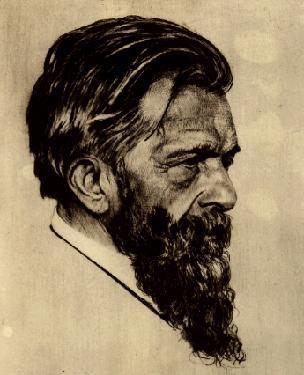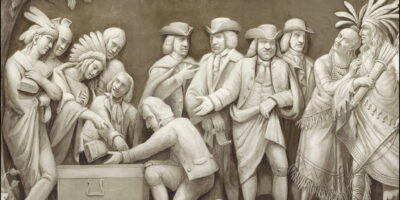Was Menger Right?
In a previous post, my colleague Alex Salter reflected on the significance and compatibility of the Mengerian and chartalist theories of money. The Mengerian theory argues that money arises in the course of exchange as a means of lowering transaction costs. A commodity that becomes commonly valued by all actors comes to efficiently intermediate exchange. Once the recognition becomes widespread, the commodity attains the status of a commonly accepted medium of exchange. The chartalists hold that money arose as an accounting device that facilitated extraction by the ruling elite. While neither of these formulations describe exhaustively either theory, they provide a reasonable anchor for considering the implications of each argument. This is our point of departure for considering the validity of either theory as an explanation of the origins of money.
Leonidas Zelmanovitz argues that the incompatibility between the chartalist and Mengerian view of money tend not to lie in their account, but in their normative implications. Even if money originated with the state, that does not imply that its origins define its purpose in modern context. The weak position of Zelmanovitz, reiterated by Salter, serve as a respectable baseline for approaching the meaning of either theory and the meaning of money in the context of either theory.
Should we give preference to one theory over another as an explanation of origins? Zelmanovitz defends the stronger support for Menger, noting that this support is shared even by “the critics of catallactic [Mengerian] theories (46).” These critics, who include Georg Knapp, A. Mitchell Innes, and John Maynard Keynes, “are not disputing the account of the origin of money (46).” Rather, they dispute the essence of modern money as somehow being separate from the state. While we cannot be absolutely certain that one theory is correct, the logic of human action allows us to evaluate each theory and consider the likelihood of each.
When we discuss the origins of money, or the origins of any institution, we are asking about the generation of a new conception, attributing a particular kind of meaning to an object and one’s relationship to that object. Austrian economics is a tradition well prepared for the problem of conception. Embedded in action is the understanding of the acting agent. Mises writes,
There always remains at the bottom of each of his [the historian’s] problems something which resists analysis at the hand of these teachings of other sciences. It is the individual and unique characteristics of each event which are studied by understanding (49).
Before a concept is generally adopted by a population of individuals and attains the status of a theoretical category for scientific observers, it must first be discovered in the actions and understanding of individual agents. There was a point in history where money did not exist. And, over a brief period of time, acting men and women discovered that a commodity was acting as money and came to recognize the commodity, not just as any tradable good, but as a good with its own unique category.
In evaluating the validity of either origins story, we must ask, under which condition do we expect this new category of object to arise? Both theories may be plausible, but the requirements for the Mengerian theory are much less restrictive than the chartalist theory. In order for the state to be the originator of money, some agent operating in service of the state would need to have first conceived of money. This person would also need to convince other agents in the state that money would efficiently aid extraction from the local population before money actually existed. Compare this to what is required for the Mengerian story where the emergence of money requires no great risk on the part of those who first use it. Money can arise entirely by accident in the Mengerian story. If, for example, an oat farmer finds that his crop is highly saleable, he will be encouraged to produce more of it as it is in high demand. Others who notice will be encouraged to acquire more of the good as it reduces the number of exchanges required for them to acquire the goods they prefer. The Mengerian story fits well with social processes implied by price theory. The chartalist theory, if it is to serve as an explanation of origins, requires that a relatively small set of actors intentionally invent money and implement a system of tax collection with it. These requirement are restrictive in comparison to the Mengerian theory.
One might ask, if the state did not invent money, why do we observe a state monopoly over money throughout the history of early modern civilization? Again, we can compare the plausibility of the chartalist theory to an alternate theory that is compatible with the Mengerian theory. David Glasner argues that state monopoly over money in early societies was all but inevitable due to the interaction of the monetary system with politics. A local mintmaster may seize upon an opportunity to fund an army by minting devalued coins in a one-shot collection of seigniorage. This alone may be enough to establish a new ruler over a kingdom. Such a threat incentivizes the current regime to bring money production under the auspices of state control. This story does not claim that seigniorage may serve as a long-run source of government revenue. Attempts of this sort tend to be destabilizing. We need recall the experience of John Law, Revolutionary France, or Weimar Germany to understand the fruit of such a plan. This story is coherent with standard price theory and, once again, seems more likely than one that requires innovation and implementation by the state.
So did the state invent money? While we cannot rule out this possibility entirely, the theory is at odds with the fundamentals of praxeology.











